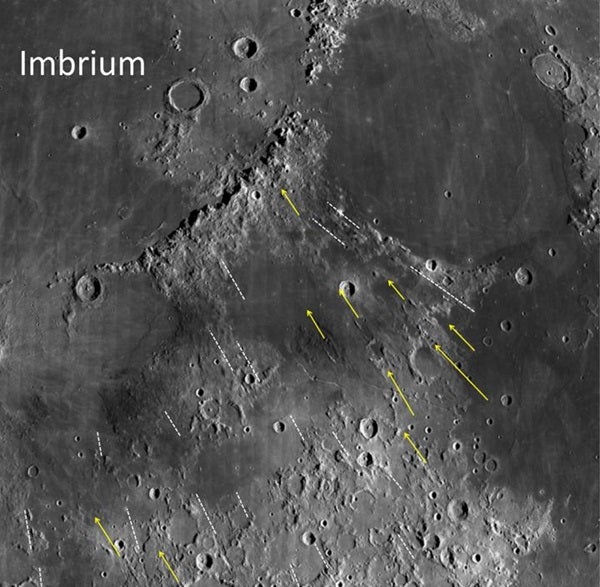The Moon was struck by an object in the past, scientists have no doubt about that. What they didn’t know, until recently, is that the Moon may have been struck by pieces of a proto-planet.
In a new study in Nature, professor Peter Schultz from Brown University and his team have found evidence that pieces of an impacting proto-planet created the area called Mare Imbrium, a.k.a. Imbrium Sculpture, around 4 billion years ago. The diameter of the asteroid is estimated to be 250 kilometers (155 miles) and roughly 30 times more massive than first thought says Schultz.
“This debris gouged into the lunar surface, all across the Southern Highlands but did not seem to radiate from the center of the basin,” says Schultz. “Rather, they pointed back to a region northwest of the basin center.”
This pattern lead astronomers to these new findings of the Imbrium Sculpture. The grooves that surrounded the 1,250 kilometer-diameter (776 mile-diameter) crater did not follow the previous theory of impact by a smaller asteroid.
“If this were a vertical impact, most of the ejecta would have radiated outward like the spokes of a wheel,” says Schultz. “The non-radial pattern has been evident for some time but simply attributed to deflections or to tectonic features.”
Schultz had mapped the criss-crossing structure of the Imbrium Structure by using NASA’s Lunar Reconnaissance Orbiter (LRO) and Apollo images at the Northeast Planetary Data Center at Brown University. After the LRO provided a more elaborate coordinate system, Schultz was able to extrapolate the features over a larger area and onto a larger map.
The new method was applicable at laboratory scales, but Schultz was unsure if it would be applicable at asteroid scales. A co-author of the paper, David Crawford at Sandria National Laboratories was able to used advanced 3D modeling to confirm that the pattern from this larger asteroid would indeed leave behind the grooves found on the Moon today.
“A certain fraction of the asteroidal debris would have escaped the Moon, continuing along its original trajectory. These small fragments would have been on Earth/Moon-crossing orbits and eventually swept up,” says Schultz. “So, Imbrium and other large oblique impacts on the planets could have contributed debris responsible for the Late Heavy Bombardment” (between 4.1 and 3.7 billion years ago).
The next step to continuing their research is to use their method of mapping and 3D advanced modeling to predict the sizes of the objects responsible for other impact craters on other worlds, like Mars and Mercury says Schultz. This new technique is a huge finding as it is transferrable from object to object. Who knows that new discoveries this technique will find.










